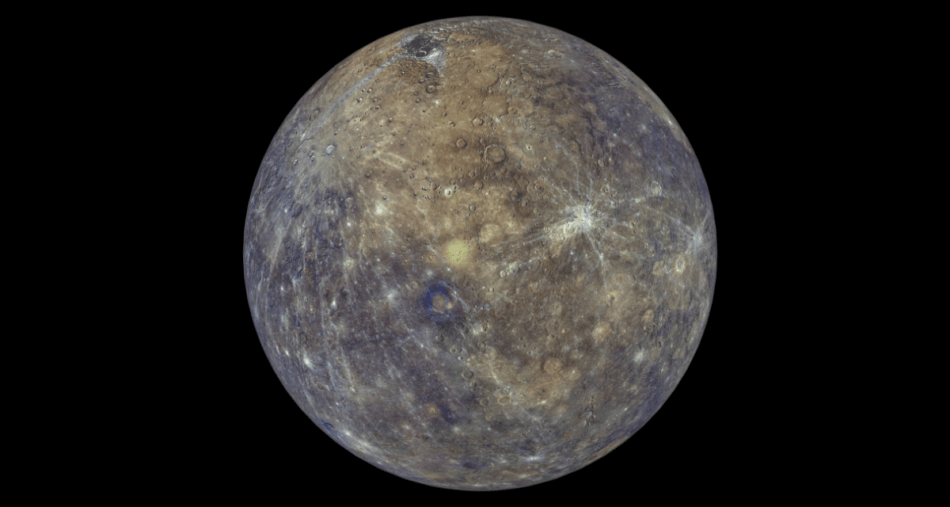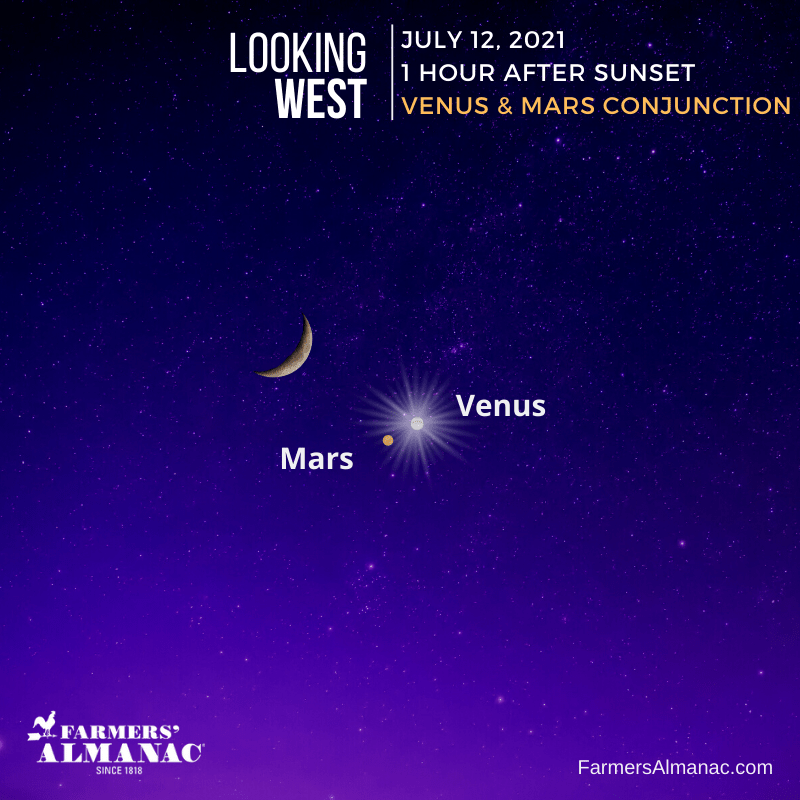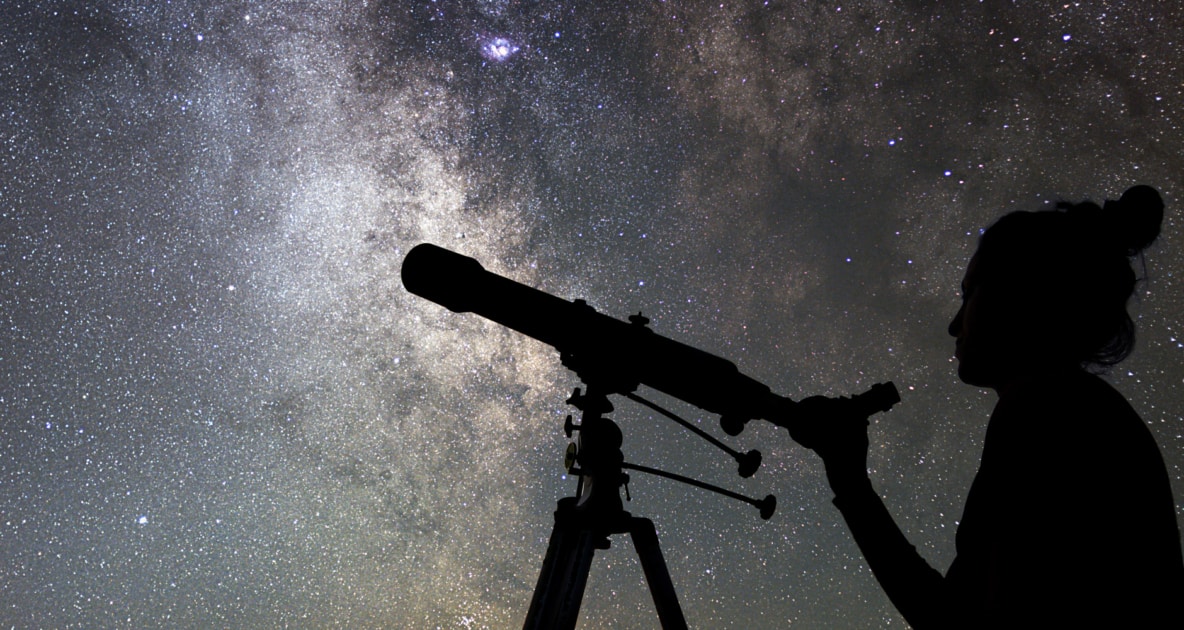Summer is a great time to be outside, even after the Sun goes down. As you enjoy the warmer nighttime weather, be sure to check out our list of celestial events you’ll be able to see during the month of July. Be sure to bookmark this page and refer to it all month long.
Take note that we sometimes will use angular degrees to define the separation between two objects, such as (for example) two bright planets. Keep in mind that the width of your clenched fist, held at arm’s length, measures roughly 10°. Magnitude can be thought of as a “grade” in accordance to the brightness of a star or planet. A “bright” or “very bright” object can be considered first or zero magnitude. “Fairly bright” is second magnitude, “medium” is third magnitude, “faint” is fourth magnitude and “very faint” is fifth. A negative magnitude denotes an object of exceptional brightness. Venus is usually minus 4; the full moon is minus 12.7 and the sun is a blindingly bright minus 26.7!
All times are listed as Eastern Daylight Time for the Northern Hemisphere.
July 1—Last Quarter Moon at 5:10 p.m. In this phase, the Moon appears as a half Moon due to the direct sunlight; the illuminated part is decreasing toward the new Moon phase.
July 4—Mercury stands at greatest elongation west (22° from the Sun) but viewing, unfortunately, is unfavorable for those in mid-northern latitudes. Look for it with binoculars 45 minutes before sunrise just above the east-northeastern horizon. It’s 11° to the lower left of Aldebaran and 26° to the lower right of Capella. The planet’s magnitude is +0.5 and a telescope shows its small globe 35% illuminated. For the next two weeks as this speedy planet brightens to magnitude -1, it can be seen much more easily as more of its lighted side is turned toward us. But late in the month it will quickly move into the glare of the sun, passing superior conjunction (on the sun’s far side) on August 1st.

July 5—at 6:27 p.m., Earth arrives at aphelion, which is that part of its orbit that places it farthest from the Sun, a distance of 94,510,886 miles.
July 8—This morning, an exceedingly narrow (3% illuminated) waning crescent Moon will be positioned about 4½° to the left of Mercury. Binoculars will be most beneficial in your attempt to make a sighting.
July 9 —New Moon at 9:16 p.m. In this phase, the Moon is not illuminated by direct sunlight and is completely invisible to the naked eye.
July 11—Venus sets 1½ hours after the Sun all summer for viewers at mid-northern latitudes. It stands only about 10° above the western horizon by the time it’s plainly visible a half-hour after sundown. It will be so low that it may be difficult for telescopes to show that its rather small disk is slightly gibbous. At the beginning of July, a much fainter Mars will be roughly 7° to the upper left of Venus. With each passing night, Venus will creep a bit closer and, on this evening—the night before their conjunction—a waxing crescent Moon will pass about 6° to their right. Mars will appear 1° to Venus’s left.
July 12—The conjunction of Venus and Mars – the two planets appear closest together this evening, separated by only 0.6°. Venus is 190 times brighter and almost overwhelms Mars with its brilliance.

July 17—First Quarter Moon at 6:10 a.m. In this phase, the Moon looks like a half-Moon in the sky. One-half of the Moon is illuminated by direct sunlight while the illuminated part is increasing, on its way to becoming a full Moon.
July 21 —This evening Venus appears 1.1° to the upper right of the 1st-magnitude heart of Leo, Regulus. Venus shines at magnitude -3.9, 130 times brighter than the star. Regulus should be visible to the naked eye if your sky isn’t too hazy. Binoculars and small telescopes will show the pair beautifully.
July 23—Full Buck Moon turns 100% full at 12:44 a.m. In this phase, the visible Moon is fully illuminated by direct sunlight. Though the Moon is only technically in this phase for a few seconds, it is considered “full” for the entire day of the event and appears full for three days. See how this month’s Moon got its many names in our short video, below.
July 24—Saturn in Capricornus the Sea Goat, rises during evening twilight all month. At the beginning of July, it takes until about 12:30 a.m. local time to reach an altitude of 20° or so, shining in the southeast sky. By month’s end, it’s there as early as 10:30 p.m. This evening you’ll find it 8° to the upper right of the nearly full Moon. Saturn is due to reach opposition on August 2nd.
A planet is said to be at opposition when it is closest to Earth. It rises when the Sun sets and can be viewed throughout the night.
July 25—Jupiter in Aquarius the Water Carrier, rises in the east-southeast ever earlier as July progresses, but it’s not at its highest in the south until the predawn hours. This month the king of the planets brightens to an imposing magnitude -2.8 and swells in size as it nears opposition on August 19th. Tonight, just prior to midnight, you’ll see Jupiter shining about 5° directly above the waning gibbous Moon.
July 29—Several weak, long-lasting meteor showers that emanate from the southern part of the sky are active from mid-July through August. The best is the Delta Aquarid shower, due to peak during the predawn hours this morning. But a bright Moon will all but wipe out this year’s display.
July 29—In the western evening sky, eight days after it was visited by Venus, Regulus now has a close brush with Mars, but as seen from latitude 40° north the pair will set half an hour before twilight ends and so will be difficult to observe. You’ll need binoculars to see this second magnitude planet just 0.6° to the upper right of brighter Regulus (magnitude +1.4). Optical aid will show the contrasting colors of bluish-white Regulus and orange-gold Mars, accentuated by the objects’ proximity to each other. Telescopes will barely reveal Mars’s tiny disk, now only a fifth as wide as it appeared during the planet’s close approach last October.
July 31—Last Quarter Moon at 9:16 a.m. In this phase, the Moon appears as a half Moon due to the direct sunlight; the illuminated part is decreasing toward the new Moon phase.
By Farmers’ Almanac Astronomer Joe Rao. This calendar is adapted from “Skylog,” a regular feature appearing in Natural History magazine written by Mr. Rao since 1995.


Second entry for July 12 appears to be from last year.